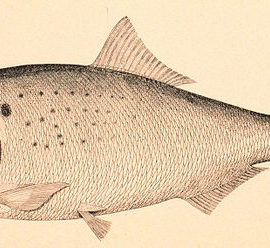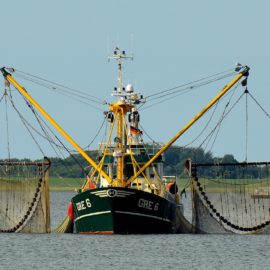
Fishermen will be bringing a suit against the land building planned for the state.
Leaders of Louisiana’s commercial fishing industry say legal action may be the last and best tool they have to fight a $2 billion restoration project that will dramatically alter a large section of the coast. “It’s going to be litigation,” said Mitch Jurisic, an Empire oysterman and chairman of the Louisiana Oyster Task Force. “It’s the only way to stop this.” The Mid-Barataria Sediment Diversion is the flagship project of an ambitious state-led plan to fight coastal land loss. The diversion would funnel mud-laden Mississippi River water through a section of levee on the west bank of Plaquemines Parish and send it spilling into Barataria Bay, potentially rebuilding 28 square miles of marsh with river sediment. The project would mimic the natural riverine processes that created south Louisiana in the first place, diverting about 7 million tons of sediment into the Barataria Basin each year.
nola.com
The land building is important to the state and while fishing may not like it, compromise is needed which they don’t seem to want.
Louisiana’s land-loss crisis owes in large part to the levees that keep the Mississippi on its current path and protect the communities surrounding it from flooding. But that protection also means river sediment can’t rebuild vast sections of the coast that have been lost to rising seas, subsidence, erosion from oil and gas canals and other factors. While many state leaders and environmental groups back the project, it’s clear the diversion will have wide-reaching effects on the Barataria region’s fishing communities. According to a recent environmental assessment by the U.S. Army Corps of Engineers, the added sediment and freshwater “would likely have major, adverse impacts” on the basin’s oysters and brown shrimp. It would also harm populations of speckled trout and flounder, according to the Corps. Last month, the Corps released its final environmental impact statement on the project. The nearly 13,000-page report paved the way for final approval in December and the start of construction early next year.
The fishing industry speaks gloom and doom and the state says yes an impact but the fishing can continue.
At a joint meeting of the state’s shrimp, crab and oyster task forces this week, several commercial fishers and business leaders predicted dire and wide-reaching consequences. The meeting, held at an auditorium in Belle Chasse, drew about 35 people. “It’s going to wipe us out,” said John Tesvich, owner of a Plaquemines oyster processing company. Once the oyster harvesters and shrimpers are gone, many other industries will suffer, Jurisic said. “It’s going to impact the stores, the restaurants, the processing plants,” he said. “And tourism? Tourism is going to be done.” To cushion the fishing industry, the state Coastal Protection and Restoration Authority increased the project’s share of mitigation money reserved for fisheries from $33 million last year to $54 million. The CPRA also expanded eligibility for assistance to businesses that buy catches from fishers, and the docks the fishers own. For oyster growers, the state will expand alternative oyster-growing projects and pay for new and improved public seed grounds, private oyster ground improvements and new breeding reefs. Shrimpers will be provided support for boat and gear improvements and money for larger boats. The crabbing industry will have access to money for gear upgrades. All three industries have been promised a boost in product marketing.
The fishermen say this is not enough.
But it’s not nearly enough, fishers said. While the Corps is accepting public comment on the diversion, many meeting attendees said they’re done writing letters and turning out at government-led meetings. “Ten years I’ve been fighting this,” said George Ricks, a charter boat captain and president of the Save Louisiana Coalition, a group that opposes the diversion. “We’ve dotted our i’s and crossed our t’s. We’ve done everything we’re supposed to. But it didn’t work.” He joined the chorus calling for legal action. “The only thing left to try is a lawsuit,” Ricks said. It’s unclear what legal strategy they’ll take. Jurisic and others said they’ll be discussing next steps in the coming days. The 30-day public comment period on the Corps’ impact statement ends Oct. 24. Corps officials are expected to release an official “record of decision” on three permits the project needs on Dec. 23.
If we lose the land, eventually they will have to move so do you fight for it all or work to save lane also.



